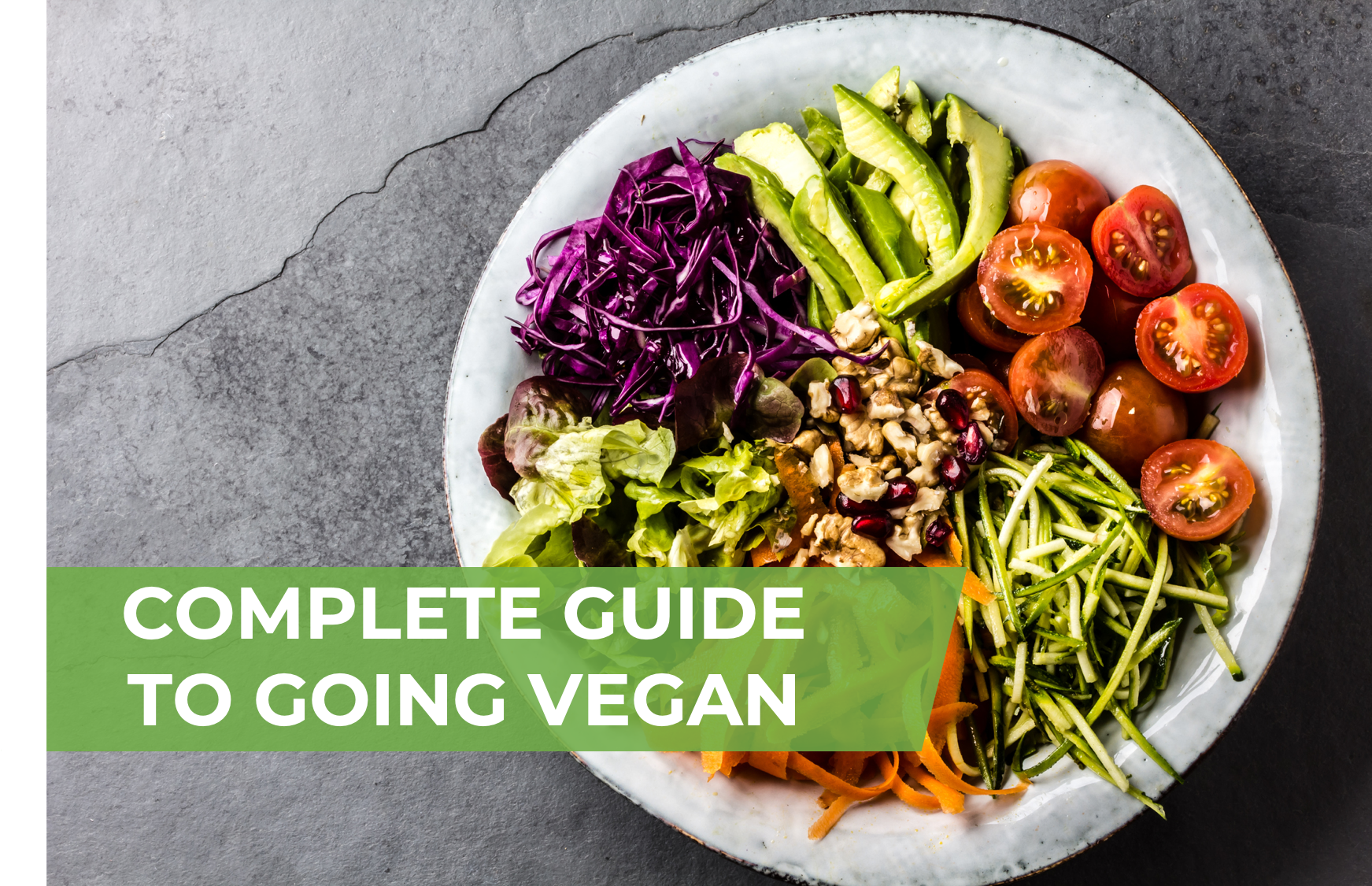Where to begin, how to transition and position yourself for success.
Want to become vegan but don’t know where to start? Can’t seem to resist letting go of foods you love? Got ambitious vegan goals backed with tons of effort, but can’t seem lock in your veganism? Whether you are new to Vegan or need help with you transitioning to Vegan — it all comes down to having a good vegan strategy.
If you want to transition to a vegan plant-based diet, and actually maintain it, you need a proven strategy that is simple and effective.
Imagine an athlete looking to prepare for a sporting game — what happens if they show up without having a plan in place and practicing it? They likely wouldn’t do well. The same goes for going vegan. Just like winning the game is just a goal; and what you need is a strategy with actionable steps, toward achieving your vegan transition. Attempting to become vegan without a plan is like showing up to the basketball game or marathon without training — how do you think you would do?
2 Step Vegan Strategy
The strategy is broken into two phases: 1) Transition and 2) Maintenance. The Transition phase is a 3-step process (Switch, Reduce, Eliminate) that takes you through small, progressive individual food choices that lead to new behaviors and long-term habits that are ultimately all-vegan. The Maintenance phase will build your resistance and prevent any cheese or ice-cream temptations. Maintenance is essentially guaranteeing that you won’t fall off of the bandwagon. You will have long-term sustainability and gain the long-term vegan health benefits. The strategy is your guidebook, whereby you do not have to overthink, you just do. Think of it like setting your mind on cruise control to the destination of vegan.
ONE LAW:
- This one law governs the behavioral strategy: it needs to be so simple, so easy, and so effortless that you don’t even know you are doing it. If at any point you find the transition breaks the law, you are moving too fast and should slow down.
TWO RULES:
- Food choices must relate to your current diet. (there are not universals)
- Don’t ever break the law.
STEP 1 – THE TRANSITION PHASE
- Write out a list of your foods/beverages that you consume.
- Identify the food/beverages containing animal products or animal-derived substances (such as dairy, eggs, and other animal-derived ingredients).
- Prioritize this list of animal product containing foods/beverages highlighted in order of easiest to eliminate to hardest to eliminate.
- Identify and write down three comparable vegan “alternatives” to substitute for each food/beverage.
1. SWITCH
Switch is identifying the foods and beverages we routinely eat/drink and substitute vegan options. Switch is the least aggressive strategy in our food modification hierarchy, but will result in a simple swap to build your vegan health food portfolio, and fuel your body with better nutrients. For example, my transition began with switching cow’s milk to almond milk. Spend 6 weeks switching out your “easy to eliminate” foods/beverages from Step 3 with the alternative foods/beverages identified in Step 4. Experiment with different brands and types of alternatives to find the best substitute.
- TIP: When choosing foods to switch, try to match taste profiles, texture, and consistency.
2. REDUCE
Reduce requires additional self-discipline, but is a powerful step in helping you claw your way closer to being vegan, and even trim fat in the process. This step involves reducing the quantity of consumption of the non-vegan foods/beverages identified in Step 2. The Reduce step creates a caloric restriction and should be gradually progressive so that you barely even notice it. For example, if you eat 3 eggs every morning, you would reduce to two eggs every morning. Eventually, you can combine Switch with Reduce and only have your egg breakfast 3 times a week (instead of every morning) and on the other days you switch to a healthier vegan option.
- TIP: Reduce the “hard to eliminate foods” (Step 3) first before trying to switch them.
3. ELMINATE
The eliminate step is at the top of the hierarchy in food modification. This step is the foundation of all commercial diets (through restricting eating of certain foods/food groups — such as grains, carbs, fats, dairy, meat, etc.). This is why there are such high failure rates with diets. This strategy should only be integrated once you have mastered switching and reducing your food. You should not feel any attachments or cravings before you eliminate a food.
- TIP: If you feel cravings for foods, move back to Switch and Reduce and experiment with different alternatives to satisfy the craving.
STEP 2 – Maintenance Phase
Switch, Reduce, Eliminate is your winning strategy for transitioning to becoming vegan. You have won the game, but now you need to set yourself up so that you can’t lose! The maintenance phase integrates the Phase 1: Switch, Reduce, Eliminate to continually improve your vegan food habits and now adds 1) Friend Management, and 2) Environment Management. Back to our sports analogy, think of Friend Management as not allowing other sporting teams’ strategies (friends’ eating habits) to beat your strategy (of being vegan). Environment management is preparing to play in any weather conditions (eating vegan at restaurants) even without your cheering crowd (motivation in eye sight). We prepare to not fail!
Friend Management
You wake up and are craving a morning workout so you call upon one of your “fit friends” (one of those friends who never turn down a workout) and you go the gym. Energized by your workout you head to work with dodging “fake friends” (those people you are forced to be around). During your day you take a quick Facebook release and chat with “virtual friends” (friends we all have online but never met). Exhausted after a hard days work you decide to relax for the evening and enjoy your home cooked vegan meal until you get a call from one your “party animals” friends (friends that always have a reason to go out) inviting you to nightclub. We all have a range of friends who we choose to spend time with based on what we are interested in at that point time in time. Alternatively, friends will call upon you to do things of their interest that are not inline with your goals and expectations. Unfortunately, vegans are heavily outnumbered by meat-eaters proposing potential challenge and temptations. We will need to have strategies to minimize their meat-like tendencies, temptations and prevent them from de-railing our vegan lifestyle.
Defense: Prepare to win (or be prepared to fail)
Informing your friends of your vegan goals and adding their support will accelerate your vegan transition and make your life much easier. Be conscious of friends who are not so supportive and manage the time you spend with them — especially when dining out! Don’t underestimate the force of your friends!
Confidently Prepared
Yes you will most likely be asked, “You don’t eat meat?”, “No cheese?”, “What do you eat?” I usually reply, “Yes, no meat, or no cheese and it is tough choosing amongst the 2 million other vegan-friendly food options in the world.” All joking aside, being able to confidently respond to the host of vegan questions will make your life much less stressful. A little confidence, and some vegan education go a long way. You may even soon find your friends following your footstep and transitioning vegan with you!
Offensive
Build your network of vegan friends (and family) in your local area and even online. Having the positive momentum to ask questions and learn will propel you toward achieving your vegan goals. Immerse yourself in vegan books, blogs, local meet-ups, and social media groups. Can’t find any? Start your own! Vegan Health & Fitness magazine is a great place start!
Environment Management
What if you lived across the street from McDonalds, work at Krispy Kreme, and the nearest fitness facility is 30 miles away — how successful do you think you would be at losing weight? Set yourself up to succeed by creating your own vegan environment where you can only make positive vegan choices (minimizing temptations). We call this setting “positive defaults” which aligns our short-term decisions with our long-term interests. Positive defaults include environmental cues to help foster positive vegan choices whether its at home, work, or at school. Here are some examples of positive defaults
- Removing tempting non-vegan foods from the kitchen.
- Keep vegan cookbooks, recipes and phone applications accessible.
- Stocking the kitchen with vegan meals/foods.
- Keep a list of vegan friendly restaurants handy at all times.
- Keep a non-vegan friendly ingredient list for grocery shopping.
Remember, making positive vegan choices is easy when things are going your way. Despite how much willpower and motivation you have, they eventually wear down and leave us susceptible to making poor choices. Setting positive defaults through creating a positive social network and setting up your environment for success will help reassure vegan choices when things are not in your favor. Think of it as vegan resilience!



